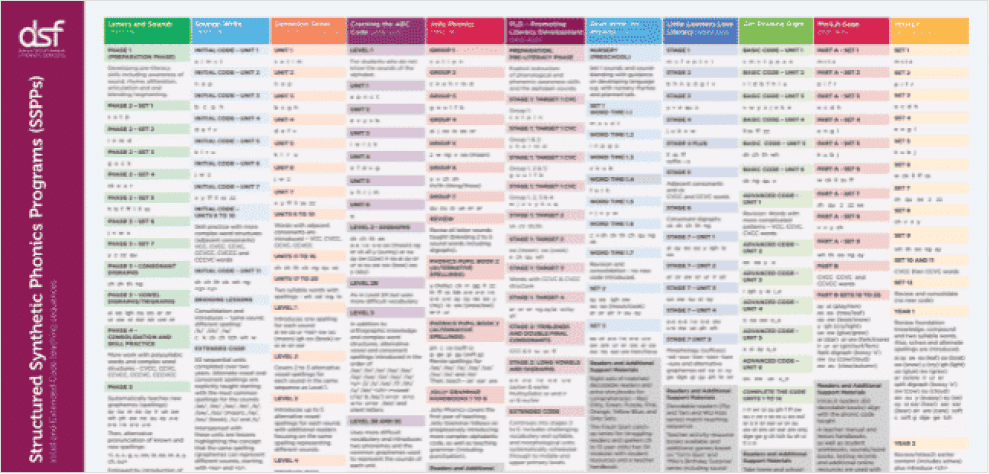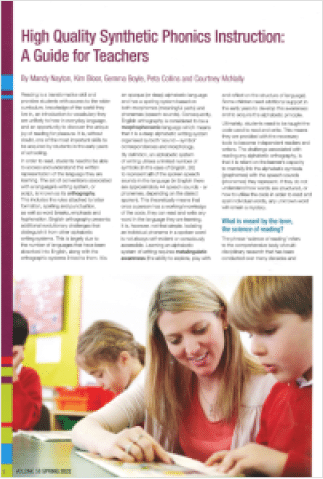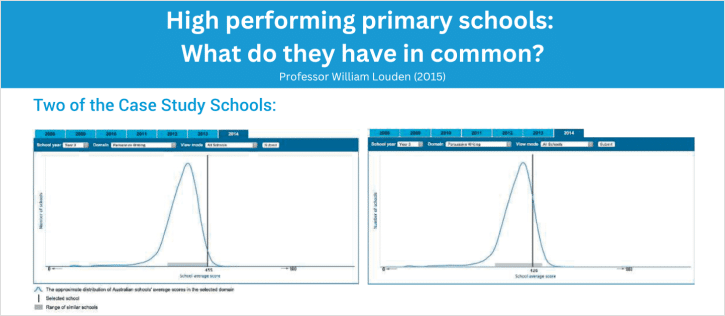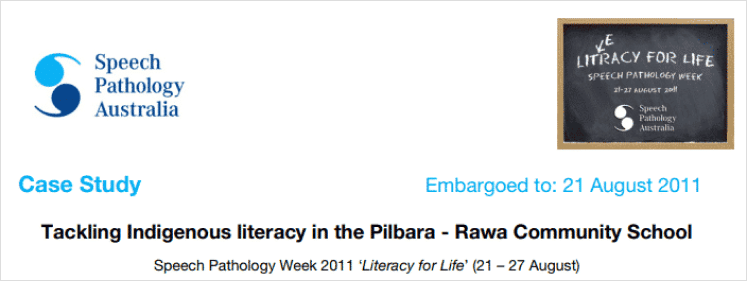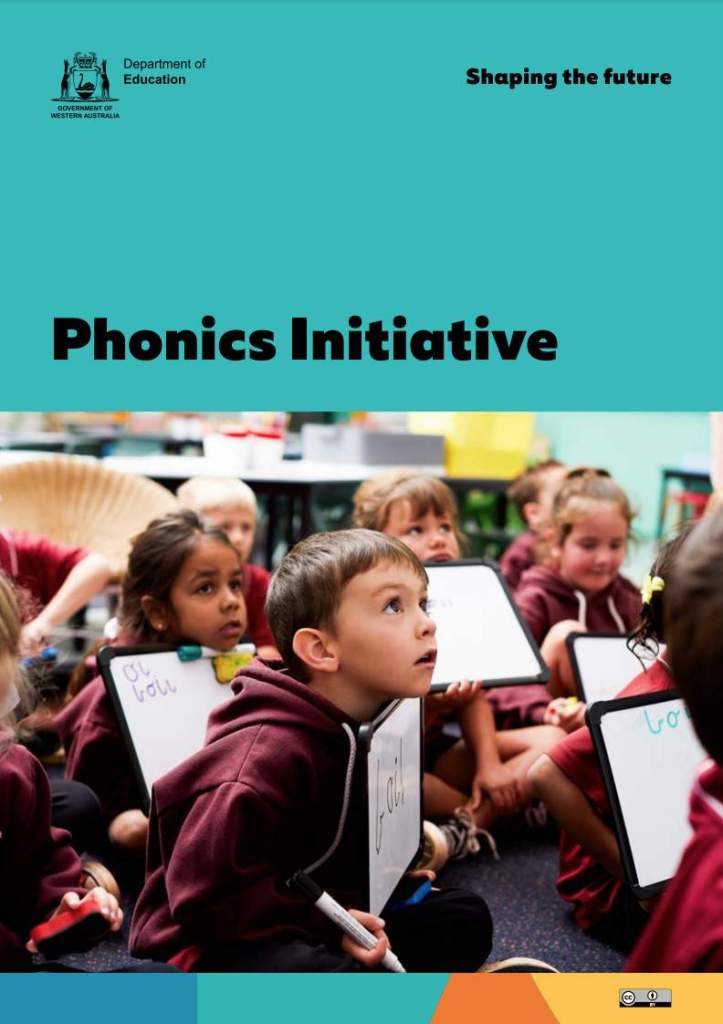What is the Evidence Base for PLD?
In Australian schools today, teaching based on evidence has become the standard practice. To ensure our educational standards measure up to both national and global benchmarks, it’s crucial for schools to invest in programs that have solid research endorsement. This ensures that investments lead to actual outcomes, rather than just following passing trends, focusing on appearances, or sticking with traditional approaches.
At PLD, our approach to Structured Synthetic Phonics (SSP) draws upon international research. We continuously update our resources in response to the latest research findings. Moreover, our programs undergo rigorous evaluations by independent researchers. These studies have revealed that when PLD programs are combined with ongoing professional development and consistent school-wide screening and tracking, measurable improvements take place. We’re excited to present three evidence-based research studies, each from a different educational context, demonstrating the profound impact that PLD can have on student achievements

Navigate to the relevant sections using the tabs below:
PLD maintains a constructive partnership with various SPELD organisations across different states. We’ve equipped numerous SPELD centres with comprehensive collections of PLD programs for their libraries. Additionally, PLD collaborates annually to deliver workshop presentations across Australia, fostering our shared commitment to education.
AUSPELD plays a central role in guiding schools towards evidence-based programs supported
by current research, correlated with improved academic outcomes, and substantiated by independent effectiveness reviews. This allows schools to make informed decisions about the programs they adopt, ultimately reducing the prevalence of students diagnosed with a specific learning disorder, such as dyslexia
The implementation of Structured Synthetic Phonics (SSP) in schools adheres to AUSPELD’s three-tier methodology, illustrated in the accompanying graphic:
In 2017, PLD earned AUSPELD’s endorsement as a recommended Tier 1 (whole class) program, as well as a Tier 2 (small group) evidence-based Structured Synthetic Phonics (SSP) program.
AUSPELD’s commendation of PLD’s literacy range is attributed to its systematic approach to teaching synthetic phonics. The range encompasses phoneme-grapheme instruction, reading exercises, writing activities (dictation),and the introduction of high frequency, phonetically irregular words.
In 2019, the Dyslexia-SPELD Foundation conducted a comparative assessment of PLD alongside other evidence-based SSP programs, as featured in The Bulletin. Discover how PLD measures up against their list of eight recommended programs for 2019.
A comprehensive update comparing high-quality evidence based SSP programs that cater to Tier 1, Tier 2, and Tier 3 instruction was subsequently published in The Bulletin in January 2022 and reiterated in November 2022.
With PLD’s holistic approach to literacy across the entire school and our array of supportive resources, we alleviate the demands on educators and schools, ensuring that most students receive effective, evidence based Structured Synthetic Phonics instruction within both Tier 1 and Tier 2 contexts.
A comprehensive study conducted by Professor William Louden in 2015, under the advocacy of the Department of Education Western Australia, meticulously examined nine leading schools distinguished by their outstanding NAPLAN outcomes. The investigation titled, “High Performing Schools: What do they have in common?”, explored the practices of these institutions. The study highlighted pivotal attributes, including minimised variations in teaching methodologies and the deliberate implementation of explicit teaching strategies to consolidate phonological awareness and phonics instruction.
Essentially, a common denominator among these schools was the integration of synthetic phonics resources as part of their pedagogy. Notably, PLD programs were commonplace within these educational institutions reviewed. The research revealed that the high-performing schools consistently employed explicit teaching approaches, particularly regarding the teaching of phonological awareness and phonics, established within a Structured Synthetic Phonics framework.
Promoting Consistency and Achievement
In the current landscape, a considerable proportion of schools have embraced pedagogical approaches that endorse “lower variation” in instructional methods by adopting the following key standards:
- Developed of scope and sequence progressions.
- Introduction of specific and designated resources, along with assessment tools.
- Establishment of clear-cut achievement benchmarks for both individual school terms and the broader academic year.
An insightful observation made by Louden indicated that all the high-performing schools uniformly employed explicit teaching strategies that featured the significance of phonological awareness and phonics. This emphasis was manifested through a systematic approach based on ‘synthetic phonics’ principles, a pedagogical norm that was diligently enforced. Notably, within the array of educational tools adopted, PLD’s Structured Synthetic Phonics (SSP) resources held a prevalent and significant position withing the schools investigated.
“Synthetic phonics is a systematic approach to teaching reading by beginning with sounds (phonemes) and blending (synthesising) these sounds to make words. All of the case study schools have implemented synthetic phonics programs in the early years…PLD Literacy and Learning… teach{es} phonemes (letter and digraph sounds), letter formation, blending of sounds together to form new words, segmenting sounds to read and write new words, and teaching specific ‘tricky words’ with irregular spelling.” Page 20-21 of the report

In a concerted effort Five From Five, AUSPELD and Learning Difficulties Australia have joined forces to create an evidence-based blueprint for schools. This framework has a bold mission: to largely diminish the prevalence of students completing primary school with inadequate reading skills. PLD has been singled out as a central player among the evidence-based Structured Synthetic Phonics (SS) programs, as indicated on page 17 of the Primary Reading Pledge and on page 25 of the updated 2024 Reading Pledge.
In 2011, Speech Pathology Australia conducted a compelling case study that spotlighted the remarkable strides achieved in a remote school environment. At this school, students rapidly transitioned from non- readers to proficient readers through a targeted and systematic emphasis on alphabet sounds and phonemic awareness, facilitated by PLD’s comprehensive literacy instructional approach.
The Rawa Community School, situated within Western Australia’s Pilbara region, mirrored the challenges faced by many remote indigenous schools. These hurdles encompassed limited access to support services and resources, irregular school attendance, persistent hearing issues due to chronic ear infections, and a diverse linguistic landscape where English often served as students’ second, third, or even fourth language.
The conventional method of literacy instruction, with its primary focus on print and words,proved to be an arduous endeavour for students to grasp and retain. Furthermore, teachers grappled with the complexities of working with diverse groups of students exhibiting varying levels of literacy skills, often compounded by limited training in literacy, as well as learning difficulties.
PLD’s program prioritised the cultivation of fundamental speaking and listening skills, such as sound awareness and language comprehension. These targeted efforts generated immediate enhancements in students’ reading, spelling, and writing abilities. By concentrating on oral language and phonological awareness, and by guiding students through the art of blending and segmenting words based on their constituent sounds, the program generated substantial and enduring gains in literacy skills.
Prior to the implementation of PLD’s program, an astounding 100% of Junior Primary students were categorised as ‘non-readers.’ Remarkably, by the conclusion of the first year of program implementation, this figure had significantly dropped to 64%. Furthermore, only a mere 25% of primary students were reading at a level comparable with their chronological age prior to the program’s commencement. In striking contrast, this number soared to 86% after the inaugural year of the program’s implementation.
Integral to PLD’s approach was the focus on equipping teachers and educational support staff with vital training. This initiative empowered the teaching staff with the necessary skills and knowledge to expertly implement language and literacy-based programs within their classrooms.
Aligned with the WA Department of Education Phonics Initiative, schools across Western Australia will now be required to conduct an annual phonics assessment for Year 1 students starting from 2023. This pivotal assessment aims to allow teachers to pinpoint students in need of extra support for enhancing their essential phonics skills. Notably, the WA Department of Education has recognised PLD as an endorsed phonics program designed to assist schools in this endeavour. Schools currently implementing or considering PLD will find it particularly relevant, given PLD’s seamless alignment with the WA Education Department’s screening requirements. PLD’s implementation not only encompasses Year 1 but spans the Early Years, Foundation, and Year 1, ensuring term by term screening and reporting on skill progression.




